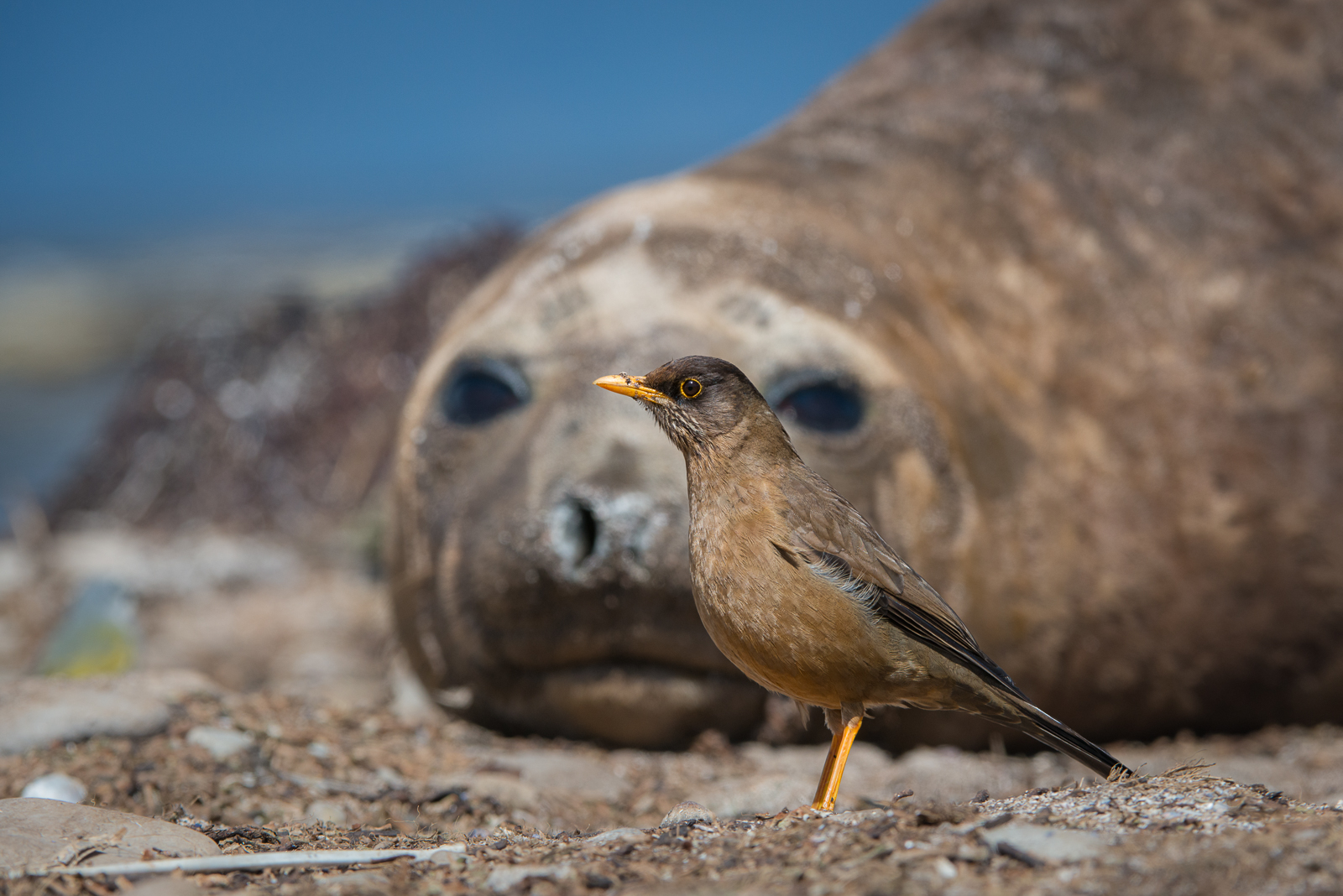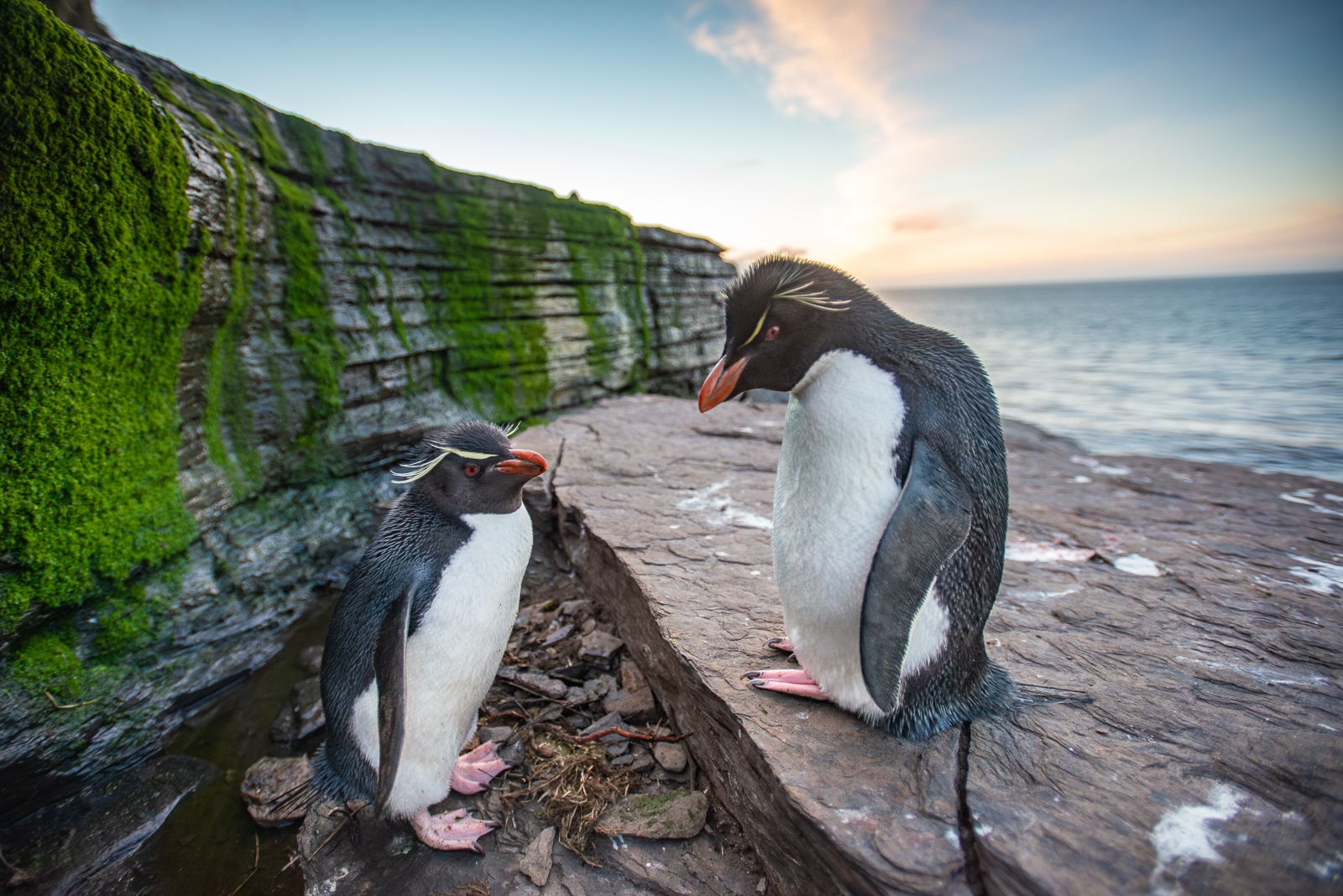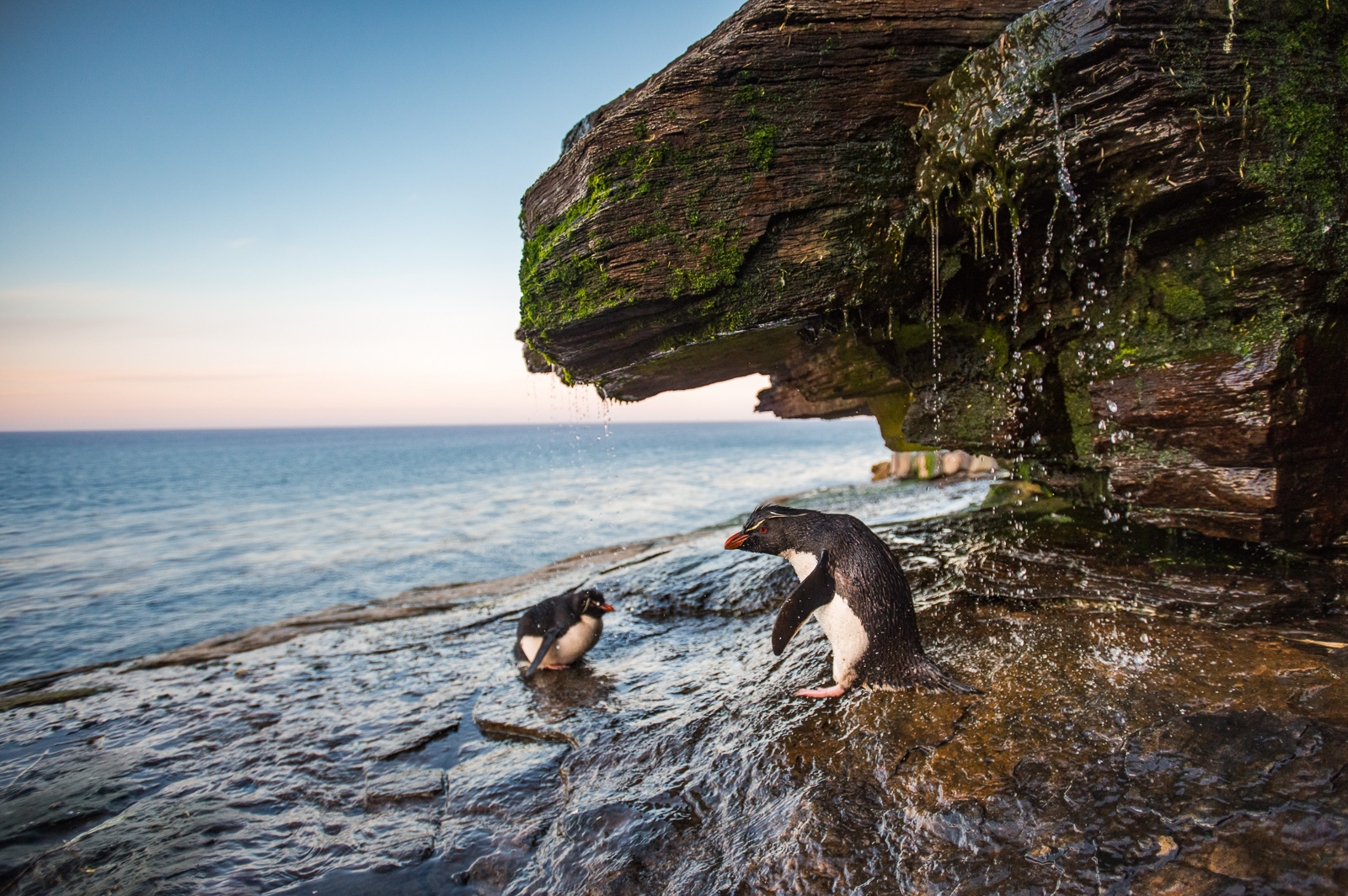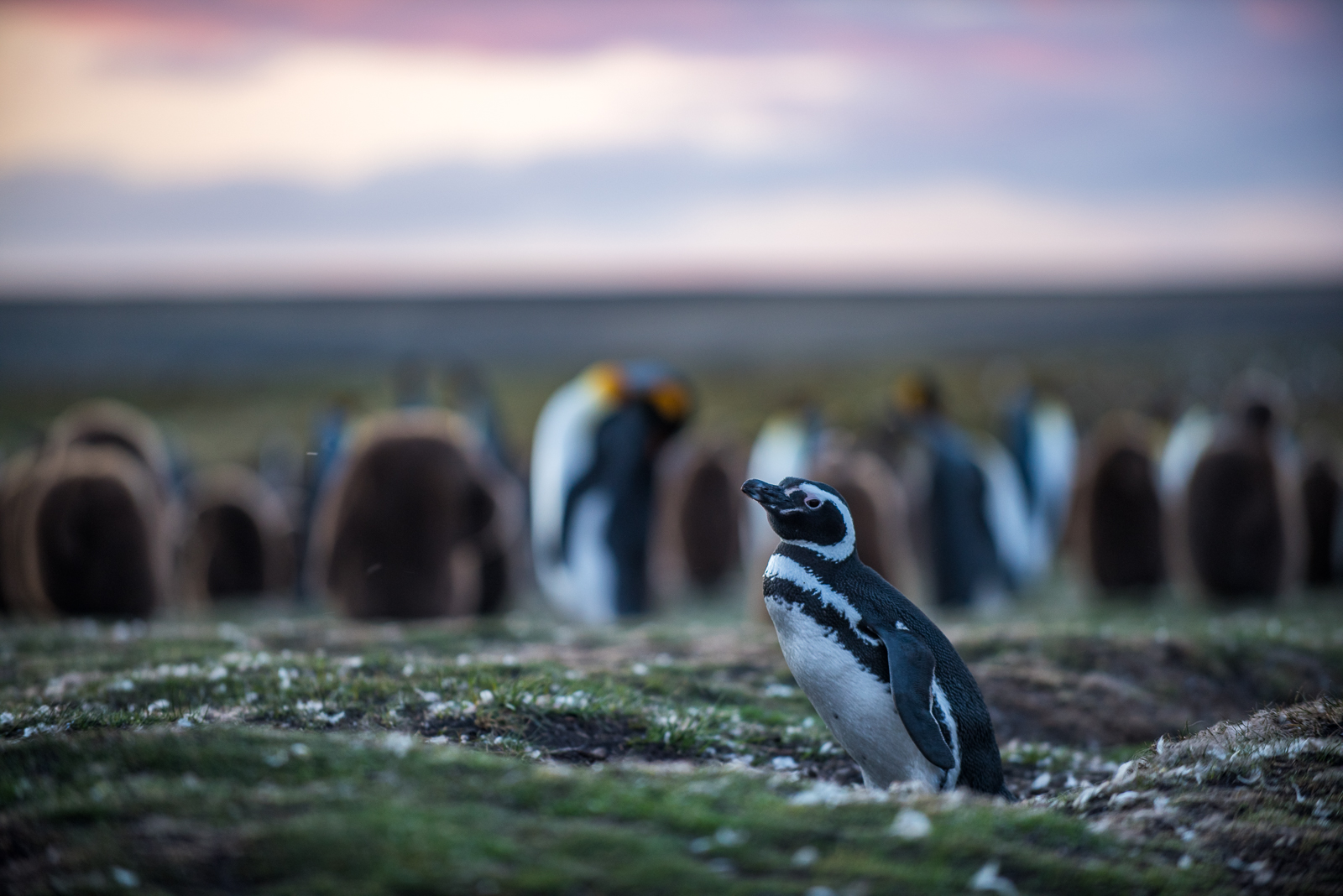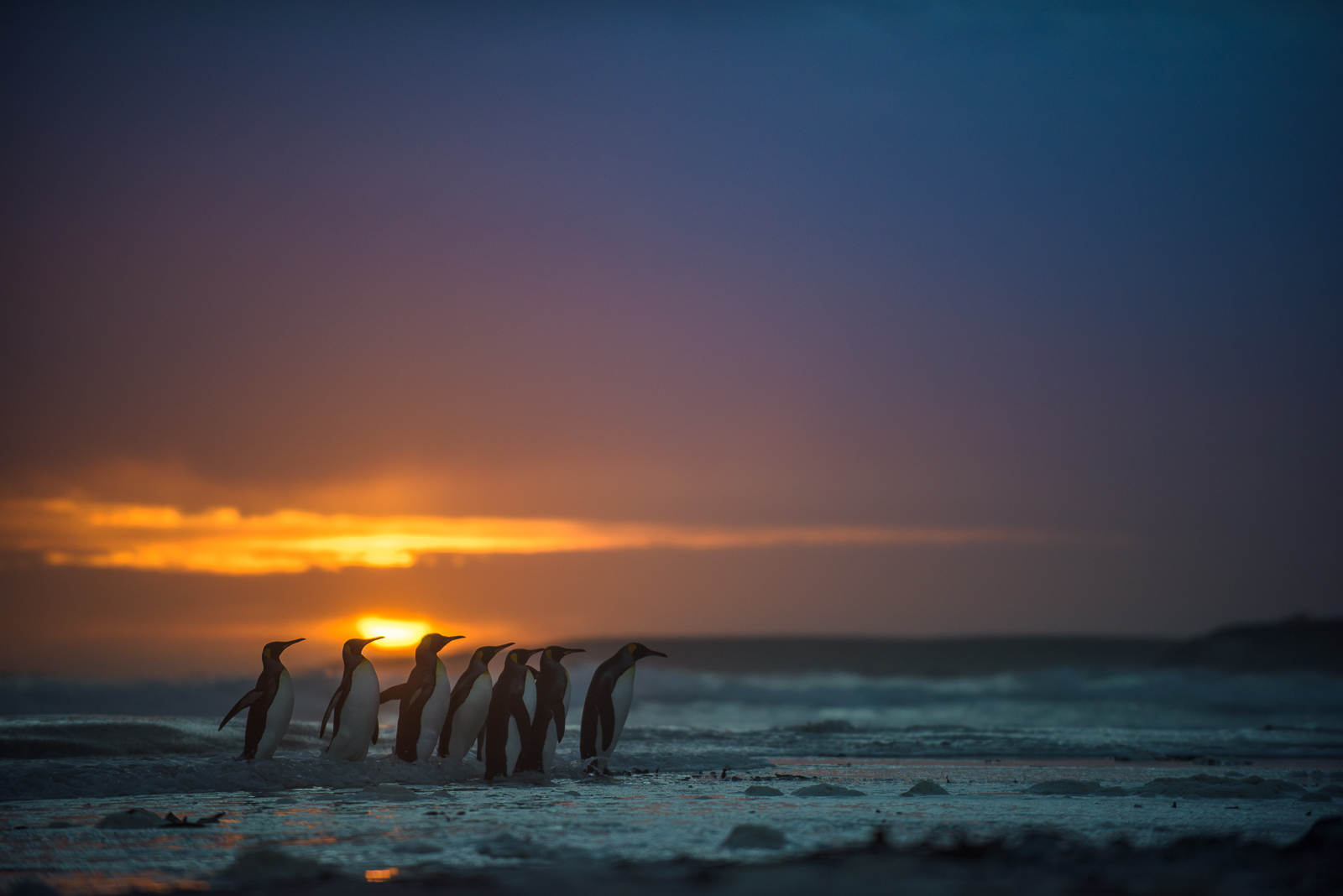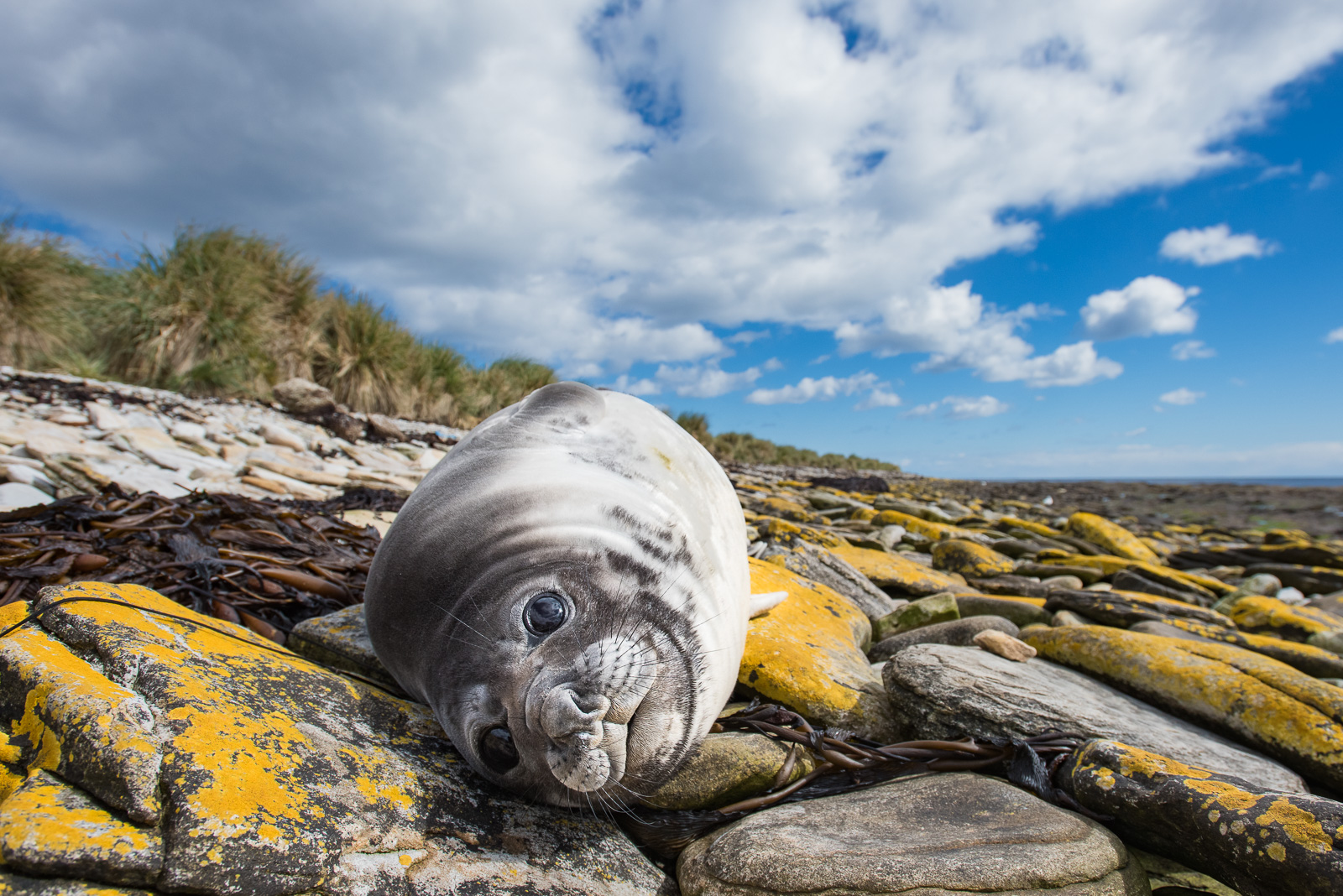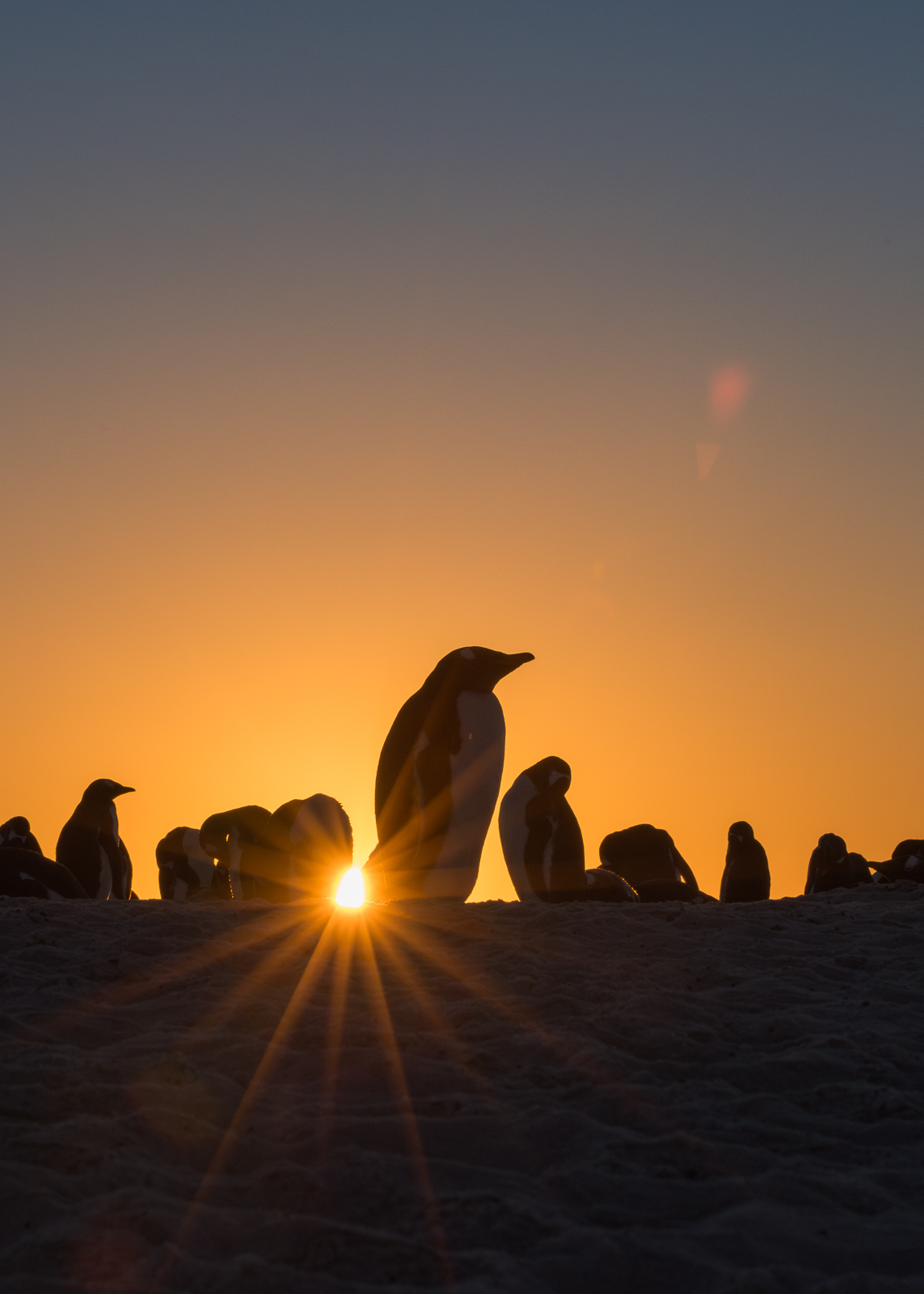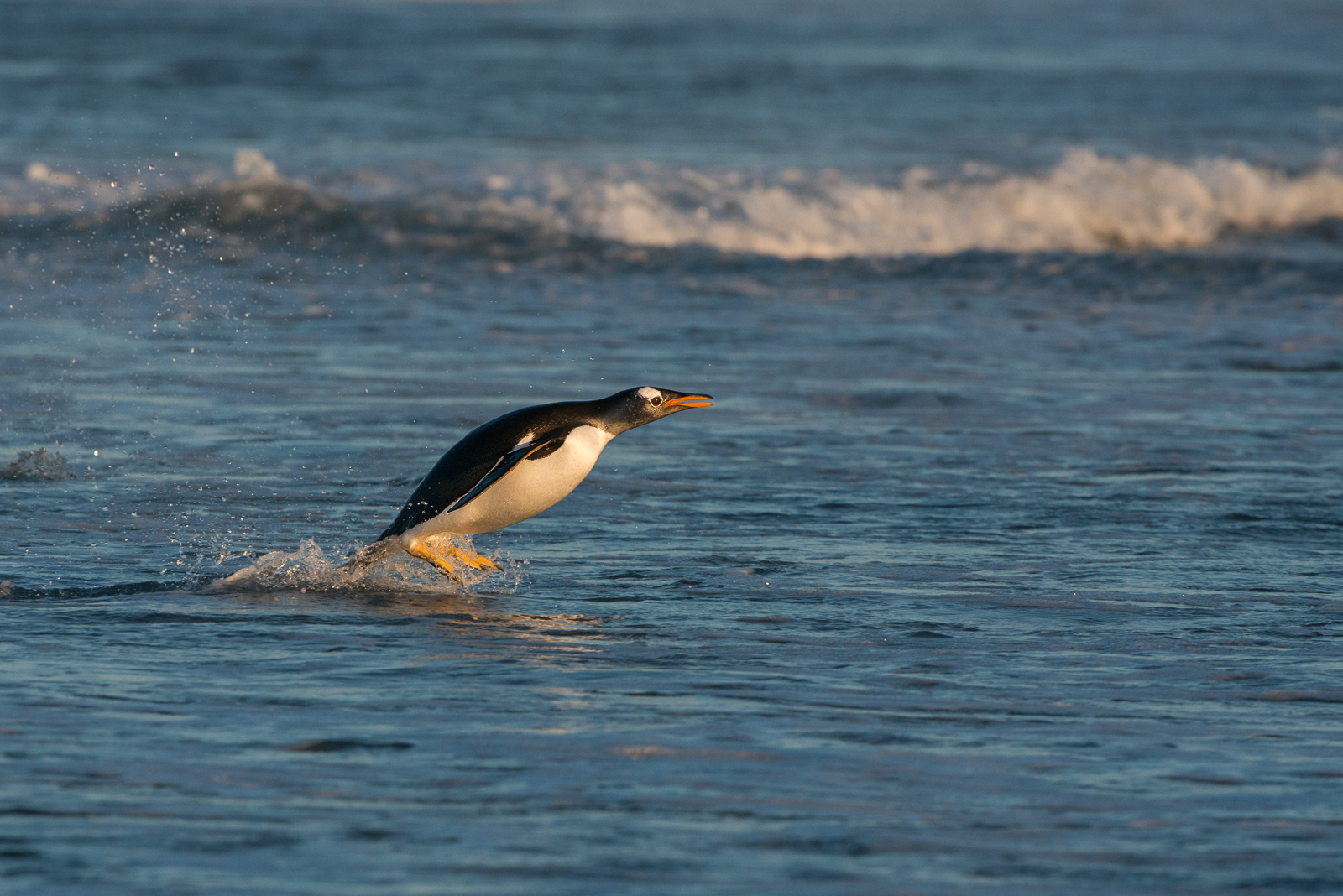Gentoo Penguin on Egg
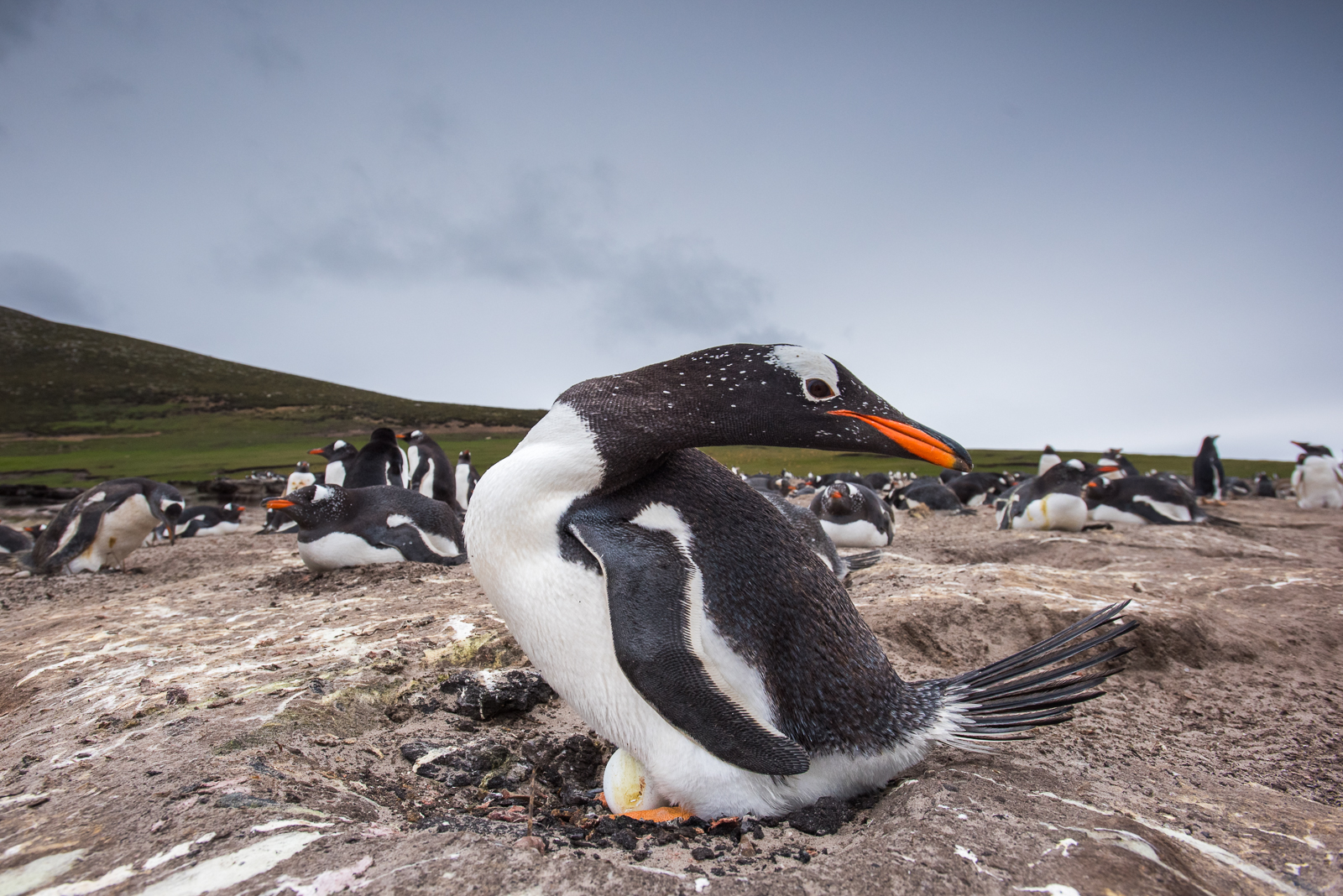 Female gentoo penguins typically lay two eggs, and both parents take turns incubating them, carefully balancing the eggs on their feet and under a warm flap of abdominal skin called a brood pouch. Shifts can last for days, with one adult guarding the nest while the other forages at sea. Once the chicks hatch, both parents continue to share duties, feeding them regurgitated food and shielding them from the cold and predators. Nikon D810 with Nikkor 17-35mm lens (at 19mm) ISO 800, f/8 at 1/640th of a second.
Female gentoo penguins typically lay two eggs, and both parents take turns incubating them, carefully balancing the eggs on their feet and under a warm flap of abdominal skin called a brood pouch. Shifts can last for days, with one adult guarding the nest while the other forages at sea. Once the chicks hatch, both parents continue to share duties, feeding them regurgitated food and shielding them from the cold and predators. Nikon D810 with Nikkor 17-35mm lens (at 19mm) ISO 800, f/8 at 1/640th of a second.
Magellanic Penguin Amidst the Kings
 Unlike most other penguin species that live in colonies, Magellanic penguins live in burrows. In the foreground of this photo a Magellanic emerges from its burrow while in the background, king penguins go about their penguin-y business in their colony. I saw a lot of hillsides in the Falkland Islands that were the sole domain of the Magellanics, but also came across a few situations like this with the species coexisting. Nikon D810 with Nikkor 70-200mm lens (at 180mm) ISO 400, f/2.8 at 1/160th of a second.
Unlike most other penguin species that live in colonies, Magellanic penguins live in burrows. In the foreground of this photo a Magellanic emerges from its burrow while in the background, king penguins go about their penguin-y business in their colony. I saw a lot of hillsides in the Falkland Islands that were the sole domain of the Magellanics, but also came across a few situations like this with the species coexisting. Nikon D810 with Nikkor 70-200mm lens (at 180mm) ISO 400, f/2.8 at 1/160th of a second.
Southern Elephant Seal
 A young elephant seal relaxes on a bed of lichen-covered rocks on Carcass Island in the Falklands. These guys are a separate, but very similar species to the northern elephant seals we get along the west coast of the United States. This is a juvenile — but will eventually grow to as much as 20 feet long and weigh in excess of 8,800 pounds — making them the largest seals in the world. Nikon D810 with Nikkor 17-35mm lens (at 17mm) ISO 400, f/6.3 at 1/1600th of a second.
A young elephant seal relaxes on a bed of lichen-covered rocks on Carcass Island in the Falklands. These guys are a separate, but very similar species to the northern elephant seals we get along the west coast of the United States. This is a juvenile — but will eventually grow to as much as 20 feet long and weigh in excess of 8,800 pounds — making them the largest seals in the world. Nikon D810 with Nikkor 17-35mm lens (at 17mm) ISO 400, f/6.3 at 1/1600th of a second.
Gentoo Penguins at Sunset
 I took this one on Sea Lion Island in the Falkland Islands back in 2014. The trick to getting a nice starburst is to place the sun on the edge of a foreground object and use a very small aperture. I also like to add a little detail to my silhouettes when I can. That slight amount of light on the sand and penguins gives the shot a bit more depth. Nikon D810 with Nikkor 70-200mm lens (at 78mm) ISO 800, f/22 at 1/500th of a second.
I took this one on Sea Lion Island in the Falkland Islands back in 2014. The trick to getting a nice starburst is to place the sun on the edge of a foreground object and use a very small aperture. I also like to add a little detail to my silhouettes when I can. That slight amount of light on the sand and penguins gives the shot a bit more depth. Nikon D810 with Nikkor 70-200mm lens (at 78mm) ISO 800, f/22 at 1/500th of a second.
Gentoo Penguin
 Photographing penguins can sometimes be a bit like playing whack-a-mole. You never know when they’re going to come shooting out of the water. This gentoo penguin was heading back to shore after an afternoon of fishing. Nikon D800 with Nikkor 200-400mm lens (at 400mm) ISO 800, f/6.3 at 1/1600th of a second.
Photographing penguins can sometimes be a bit like playing whack-a-mole. You never know when they’re going to come shooting out of the water. This gentoo penguin was heading back to shore after an afternoon of fishing. Nikon D800 with Nikkor 200-400mm lens (at 400mm) ISO 800, f/6.3 at 1/1600th of a second.


